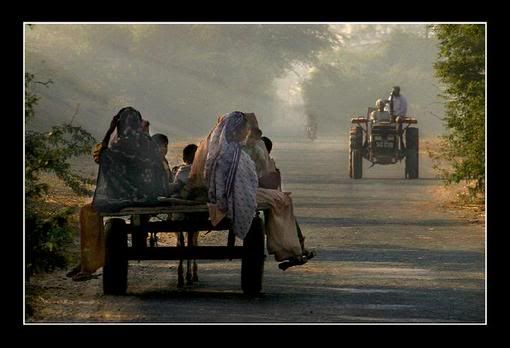Adil Najam
Every time I read one of Shirazi’s wonderful posts I am reminded of the fact that even though Pakistan is still a predominantly rural entity, the voices that speak about it are nearly entirely urban. Not surprisingly, we tend to speak about Pakistan in a mostly urban idiom, with a dominant urban bias, and using a strikingly urban imagery.
There is , of course, nothing wrong with the urban vernacular. It is, after all, the lived experience and felt reality of so many of us. However, there is something striking — and disturbing — about the near absence of the rural voice (Shirazi notwithstanding). This was not always so. An earlier generation of urban Pakistan was still very connected to the rural landscape; they were themselves rural migrants and understood the smells, the tastes, the sounds and the touch of rural Pakistan.
For too many urbanites in my generation and beyond, rural Pakistan is no longer a place you ‘go to’; it is a place you ‘pass through.’ In this age of motorways and airways, you pass through it as fast as possible; touching as little of it as you can. The tanga, the rail-garhi, the bus-larri (lorry) used to force us to stop and try out the wares of that platform, that bus-adda, that roadway khokha. There is no longer any need to stop and breathe in that little bit of rural freshness.
Politically, of course, we urbanites have turned the rural voice into the villian. The rural voice is the voice of the wadera, the jagirdar, the chaudhry, the sardar. To the extent that the vast majority of the rural proletariat enters the discourse, their role is merely that of observers on the periphery.
Conveniently, the ills we face are all of their making. We, the urban elite — at least in our own self-image — are the progressive, educated, enlightened forces being pulled down by the so-called ‘feudal’ tendencies of rural Pakistan. Even in less stark narratives, it is we the urban elites whose responsibility it is to bring — even if we have to drag them — rural Pakistan into the ikeesvien saddi (21st century). We are, and we must be, the benevolent modernizers of the ‘rural masses’ (‘masses’, of course, is that de-individualizing term of endearment that is always applied to them, but never to us).
All this, and more, I worry about. And when I do, one of the places I seek refuge in is the photographic portfolio of Umair Ghani, whose work we have featured on ATP before. Umair’s work speaks poignantly and beautifully of the reality of rural life in Pakistan (Punjab in the case of these pictures).
P.S. This is a repost of a post first published at ATP on August 10, 2006.






















































cool pics guys, i really like these photos of rural urban mix scene !
Condition at rural areas is worst.I had been to my village when i was younger but these area are at dearth of every resources.Sometimes if anyone goes there,will be feeling that we have came to some stone age era.Its not about the people,its because of this system we have.everyone struggles alot to get out of there and to go to some good colleges and unvesities;no hospitals are available.everybody strives hard to get to the place which they desire or even which are their neccessties.Urban environment is world apart from them.I wish that something could be happen for those people,so that they can also live at the ease of everything .
Excellent article. And the silence on the comments show that NO ONE speaks for what you call ‘the other Pakistan!’
@Faraz
Actually that is not so. The urban poor have a collective voice. That can sometimes be captured by parties etc. but they have scale and therefore can protest and they do. In fact, parties respond to that voice again and again through protests. The rural poor do not have any such voice. Or very little.
When it comes to having a voice, the rural poor and the urban poor are not much different. They share a lot of the same problems. And neither are heard. The weak and the poor don’t have a voice anywhere. So the article is a bit misleading.